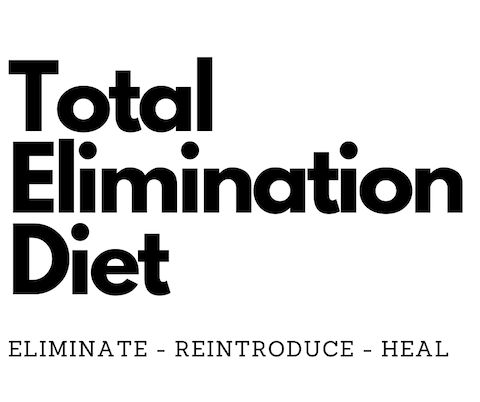A food intolerance can develop as a result of repeated exposure to the same foods, overly eating processed foods, eating out often, and carrying a predisposition to digestive disorders. You can pinpoint the culprit by taking an at home food sensitivity test or by following a total elimination diet. The elimination diet involves either eliminating all suspected food triggers or most food altogether, and slowly reintroducing them back one by one over the course of 3 – 8 weeks. So, how do you know if you need to do a total elimination diet?
Consider a Total Food Elimination Diet if You Suffer From Any of the Following:
- Gas
- Bloating
- Constipation
- Diarrhea
- Skin rashes
Pinpoint a Food Intolerance Through the Total Elimination Diet and a Food Intolerance Test
It’s important to determine what may be causing your food intolerance so that you can bring your gut back into balance. The total elimination diet is an excellent way to identify the culprit, eliminate it, and possibly reintroduce it at a later time. You can help kick start your elimination diet by purchasing an at home food sensitivity test. This will help you narrow down your suspected triggers. You’ll find the most success by incorporating both the total elimination diet and the food sensitivity test together.
Eliminate the Suspected Triggers
A total elimination diet starts by first narrowing down what you suspect might be causing your symptoms. It’s important that you are extremely diligent in reading food labels before consuming packaged foods.
Most Common Food Intolerance
- Dairy
- Gluten
- Corn
- Caffeine
- Sugar
- Peanuts
- Shellfish
- Eggs
- Red meat
- Chicken
- Soy
- Fructose
- Wheat
Food Intolerances that are Harder to Identify
- Food additives in processed foods
- Amines in fermented foods
- Avoid anything that contains yeast or fermentation
- Salicylates in fruits (specifically citrus fruits)
- Veggies (specifically night shade vegetables like bell peppers and eggplant)
- Cheeses
- Condiments like spices and mustard
- Sulfites (dried fruits, wine, and beer)
- Nitrates found in processed meat
Total Elimination Diet Meal Plan
The reason it’s important to incorporate a total elimination diet is because it may be hard to pinpoint all the possible culprit. Your total elimination diet meal plan should consist of the most basic foods. Also, make sure that you’re buying only organic foods because your intolerance can involve pesticides and fungicides.
Step 1 - Total Elimination Diet - (Elimination Phase) 2 - 3 Weeks
- All vegetables except for night shade veggies (exp: bell peppers, eggplant)
- Chicken
- Fish
- Brown rice
- Buckwheat
- Quinoa
- Almond milk
- Coconut milk
- Olive oil
- Coconut oil
Step 2 - Total Elimination Diet - (Reintroduction Phase) 3 - 8 Weeks
Once you are symptom free, you can reintroduce each food individually 2 – 3 days apart from one another. Keep an eye out for any symptoms that reappear during this stage and what food triggered it.
Step 3 - Total Elimination Diet - (Identify, Heal, Reintroduce Phase) 2 - 3 Months
By eliminating the identified culprits for 2 – 3 months, you can allow your body to heal. Once your body heals, you may be able to reintroduce these foods back into your diet. Figure out whether reintroduction is possible through a trial and error period starting after 3 months of being symptom free.
Try some of these total elimination diet recipes:
Learn more about Habitat for Wellness

